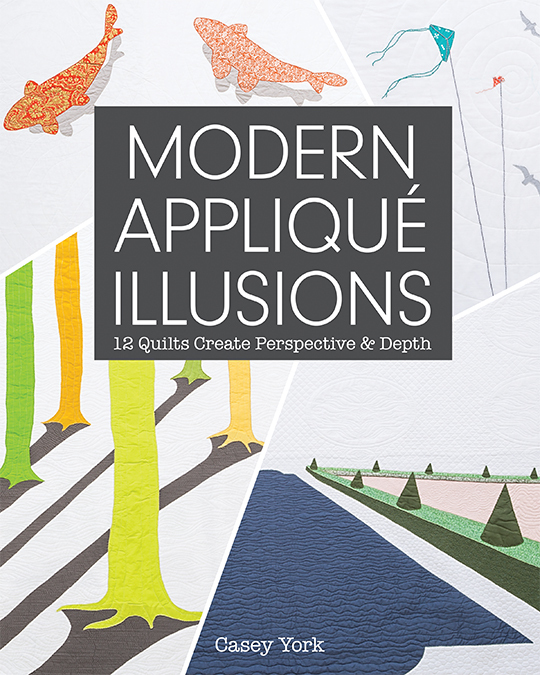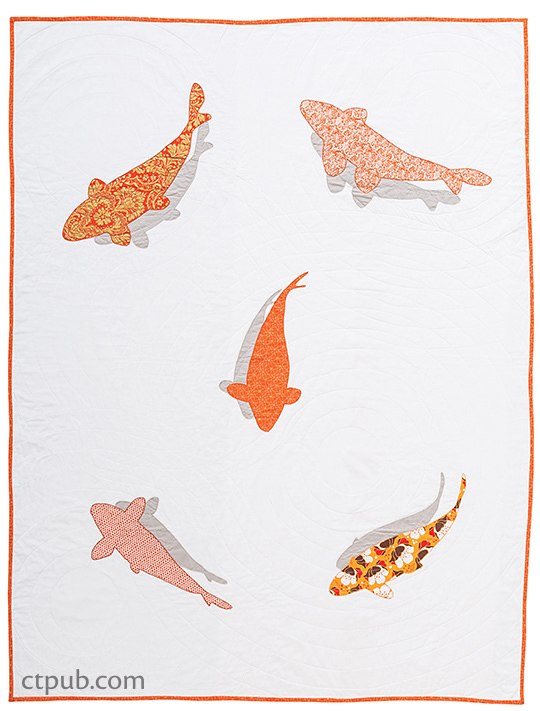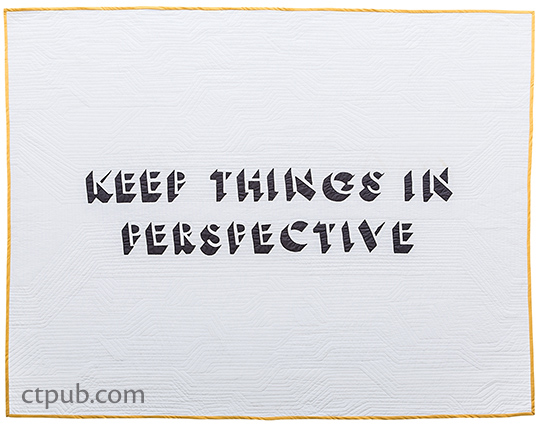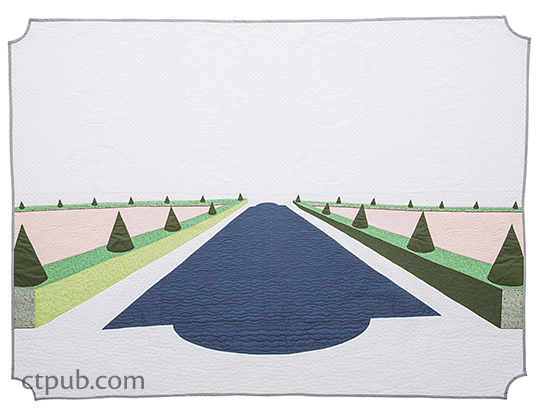Blog Tour Kickoff with Casey York
Posted by Casey York on Nov 10th 2014
Please welcome Casey York, who is kicking her blog tour off with us today! Take it away, Casey!
Hello everyone! I am so excited to be guest posting at C&T Publishing's blog to kick of the blog tour for my new book, Modern Appliqué Illusions! I've invited a great group of bloggers and companies to participate in the tour, and each will be giving away a copy of my book at their stop. In addition, I'll be posting interesting tidbits about the background and inspiration for each quilt in the book at my own blog. With each post, I'll be giving away a package of my favorite fusible web, Pellon Wonder Under 805, and, for many quilts, a bag of scraps left over from the making of that quilt! I hope that many of you will visit my blog and the others on the tour, and I think that you'll have fun learning more about the projects and techniques in the book!

Since my book is based around the idea of creating the illusion of three dimensions on a two-dimensional surface (the quilt top), I wanted to devote a little space in this kick-off to the types of perspectival strategies that I used to design the quilts in the book. As you'll read in my introduction, I was first inspired by the possibilities of illusionistic perspective when I was six years old, by my dad showing me how to draw ribbons that looked like they were three-dimensional. Some of the strategies I used for creating the illusion of three-dimensions in the quilts for Modern Appliqué Illusions are intuitive, such as using shadows. Drop shadows create a striking illusion of floating fish in the quilt Ripples, despite the fact that this quilt is actually incredibly simple to make.

Shadows also serve as the sole appliqués in Perspective, which relies on the negative space between the shadow appliqués to suggest the letters spelling out the quilt's message.

In other quilts, I used perspectival strategies that I learned later on in college, in art and art history courses. Many of the quilts in the book rely on a system called "one point perspective" to trick our brains into thinking they are perceiving a three-dimensional scene. Grand Canal is an excellent example, as it uses both of this system's core concepts: 1. Lines running away from a viewer will appear to converge upon a "vanishing point" at the horizon, and 2. Objects will appear to diminish in size as they get further away from the viewer.

Grand Canal employs both a central vanishing point, towards which other lines converge, and a set of objects--the topiaries--that are meant to seem the same size but shrink as they approach the horizon. Together, these two conventions trick our brains into perceiving the scene as receding into three-dimensional space, even though it is actually laid out on a two dimensional surface.
Modern Appliqué Illusions features many quilts based on one- (and also two-) point perspective and shadows, as well as explanations of why the illusions work the ways they do. I'm thrilled to be able to share some of the behind-the-scenes theory with you here, and I hope you'll follow along with the blog tour to learn more about each quilt project in the book!
BLOG TOUR SCHEDULE
11/11: Jenifer Dick/42 Quilts
11/12: Esch House Quilts
11/13: Pink Chalk Studio
11/14: Shannon Brinkley/Bottle Tree
11/15: Pellon
11/16: Feed Dog Designs
11/17: Generation Q Magazine
11/18: Sew What's Cooking?
11/19: Violet Craft
11/20: Fat Quarter Shop
11/21: St. Louis Folk Victorian
11/22: Hyacinth Quilt Designs
11/23: Modern Quilts Unlimited
GIVEAWAY
Enter to win a copy of Modern Appliqué Illusions here: a Rafflecopter giveaway






